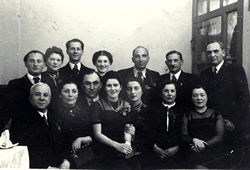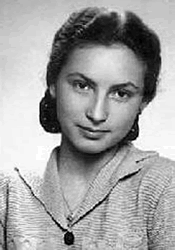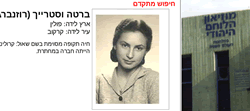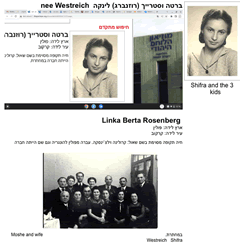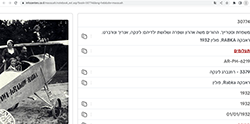#wstrich-1:
#wstrich-2:
#wstrich-3
#wstrich-4
#wstrich-5
The Westreich family
Light at the end of the canal,
Before the war, the family of Moshe Westreich lived in their spacious apartment at 8 Tomasha Street in Krakow. There were three children in the family, and they all attended the Haim Hilfstein Hebrew School. It was a warm Zionist home, and Moshe, the father of the family, visited Eretz Israel in 1935, to examine the possibility of immigrating to Israel.
For a living, Moshe ran a large plumbing, water and gas plant, as well as building houses. Over the years he built 11 houses in Krakow, and due to the professional requirements he had a map of the sewage system of the Krakow area.
With the establishment of the ghetto in the Podgorica district, after the German occupation, the family was forced to move to the ghetto, on Naduyslenska Street. Even then, Westreich predicted that the fate of the Jews would be bad and bitter, and with the move to the ghetto, Moshe looked for ways to save his family.
Thanks to his skill in plumbing and construction work and his rich experience, Westreich got a senior position as head of a working group at the German engineer Lux. A good relationship developed between Westreich and Lux, thus enabling Moses to include many Jews in the working group, and thanks to the certificate they received, these people were protected from deportation to extermination camps.
As part of the rescue ideas, Mr. Westreich came up with the idea of marrying his eldest daughter, 18, to a friend with Hungarian citizenship, and on the basis of this citizenship the daughter could live outside the ghetto, and help raise funds for the family. In addition, Moshe rented from Christian acquaintances, the Nizelska family, who lived at 27 Dietla Street, and agreed with them that if necessary, the Westreich family could move in with them, for a fee, and a promise that if his family survived, the host family would be generously rewarded.
On June 1, 1942, during the first Aktion in the ghetto during which thousands of Jews from Krakow were sent to the Belzec extermination camp, Moshe and Streich, his wife and son Henrik, fled through the sewer system from the ghetto to the Aryan side of the city. The youngest son, Norbert, was already in the Nizelski family's apartment. After the Aktion, the parents and Henrik returned to the ghetto, and little Norbert remained with his Christian hosts.
In the ghetto, rumors spread about the possibility of escape through the sewer. Many approached Mr. Westreich and asked to be allowed to join him when needed. They offered him money and jewelry in return, but Mr. Westreich refused to take their money and said, "When the time comes I will go, and you will come after me."
Thus, on March 13, 1943, on the day the ghetto was liquidated when thousands of Jews were murdered in Zagudi Square, Mr. Westreich went down the drain with his family. The opening of the sewer was on Vangirska Street and it led to the Zablucia area, far from the ghetto.
Dozens of people descended into the canal following the Westreich family. Among them: the Glazer family - the mother, daughter Renia and her brother, Romek Anisfeld, Marcel Wasserman, Genia Meltzer and many others. All these people survived the war and testified to the existence of the tunnel. In their testimony they mentioned Moshe Westreich, the man who revealed to them this escape route.
Moshe Westreich did not survive the war. During one of the searches following Polish underground operatives operating on Dietla Street, Mr. Westreich was apprehended, transferred to the Gestapo prison on Montlojf Street, and after a few days in detention was transferred to the Plaszow concentration camp. On one of the first days of May 1943 execution. Arie Bittersfeld-Sadeh, who worked in Mr. Westreich's work group, and several other boys who worked for him, treated his body and brought it for burial.
Mr. Moshe Westreich remains in our memory as a noble, generous and gracious man, may his memory be blessed.
I read the story of Moshe Westreich's sewer in the biographical book of his daughter, a friend of my youth,
http://www.cracow.org.il/%d7%96%d7%99%d7%9b%d7%a8%d7%95%d7%a0%d7%95%d7%aa/%d7%90%d7%95%d7%a8-%d7%91%d7%a7%d7%a6%d7%94-%d7%94%d7%aa%d7%a2%d7%9c%d7%94-%d7%9e%d7%a9%d7%a4%d7%97%d7%aa-%d7%95%d7%a1%d7%98%d7%a8%d7%99%d7%99%d7%9a/ of the Westreich family.
Esther (Stania) Manheim
